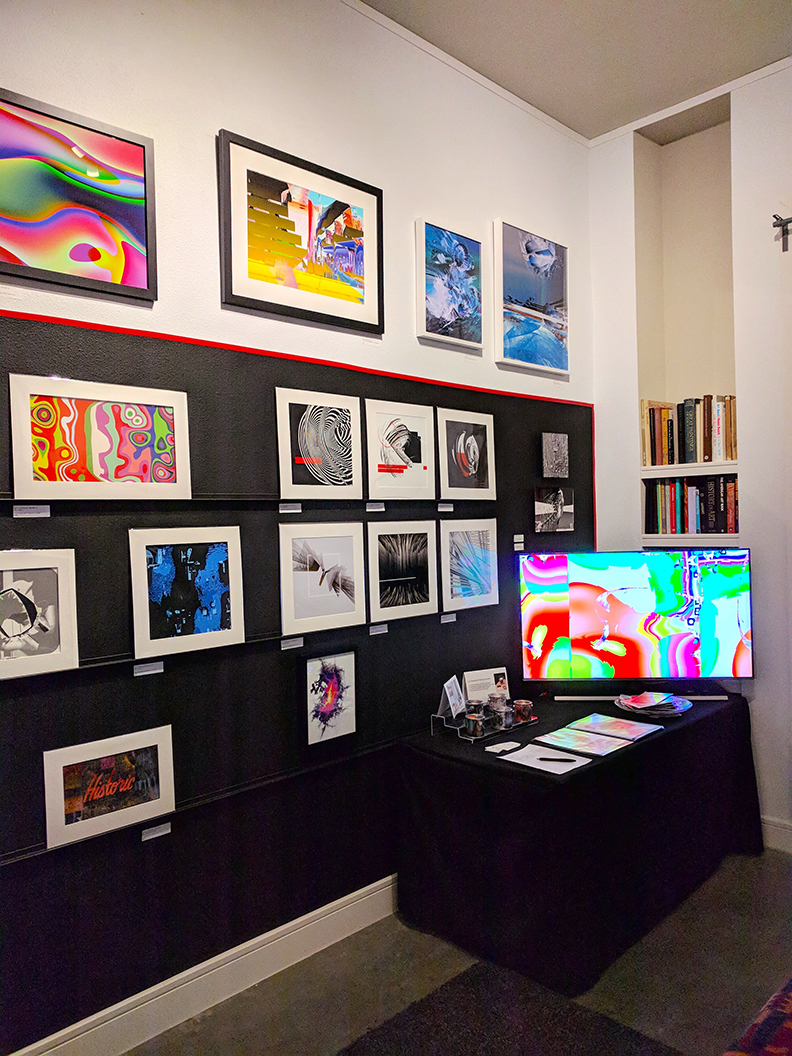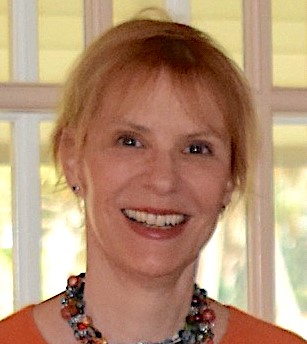Julia Morton’s lifetime of art, fashion design and curation led her to open a gallery in East Austin featuring digital artwork. It explored a new terrain of visual art where artists work in collaboration with AI.

By Tess Harmon
Julia Morton has been surrounded by art her entire life. Growing up in New York City, she visited museums with her parents, listened to her mother practice her docent lectures and found the love and appreciation for art her parents instilled in her.
“I sort of grew up in that environment of thinking about art as something that elevated life,” Morton says. “It wasn’t just an object; it was something that actually added to the atmosphere of your existence.”
After graduating from Pratt Institute with a degree in fashion design, Morton opened her own boutique in the East Village, Einstein’s, which sold avant-garde clothing. By moving to the East Village in the 1980s, Morton joined a movement and a league of artists who were pushing the edge of modern art, such as Jean-Michel Basquiat and Keith Haring. This period deeply informed her perception of art.

“At the end of 20 years of fashion, I sort of look back on my history and recognize that I understood something about art that you can’t get from a book, you can’t get from a classroom,” she says. “When you live through a movement like that, you get to see how art actually happens. You get to see who makes it, who doesn’t. You get to understand it in a different way.”
So, Morton began sharing that understanding and writing about art for publications. As a fashion designer, she recalls getting tasked with covering the “worst” assignments, which ultimately led her to discover computer art—art created by humans working in collaboration with AI. Morton was captivated and recognized how digital art does not conform to the elite art establishment, but says more about our present existence.
“I started looking at art to understand what it was we were recording about ourselves and our time. As an art writer, you look back in time all the time. So, you’re always looking back at old art movements or old historical things and trying to understand what their lives were like, based on the images and symbols they give you. Art is a kind of time capsule. It holds the truth of our existence against all the pressures that will come to re-edit and delete and cover up and pretty out the truth.”

In 2011, Morton and her husband moved to Austin and opened the Generative Art Project, a gallery in East Austin featuring digital art. She became evermore fascinated with the concept and how generative art could be used to reveal more about the world around us. Artists she featured in her gallery have used AI and computer programs to depict the sound of an endangered animal in the Amazon rainforest; illustrate the confluence of music and visual art; and visualize even their own dreams.
In curating her gallery, Morton better understood what people love about art.
“Art is a way we create our own identities. It is a nurturing and supportive and mothering experience. When we have a work of art, we get to know it; we hang it on the wall. If we have it for years and years, it changes to us over time. It’s there with us in the good moments and the bad. It begins to absorb that like a sponge, and it feeds it back to us.”
Morton’s gallery grew in popularity and drew in the interest of businesses such as Apple and Google, who wanted to include the work in their spaces. She even planned to create a digital art museum, but when COVID-19 hit, she was forced to shut down.
Now, after an extensive career in art, design and curating, Morton says she is bowing out of the art world. She plans to publish her memoir and write books about her time in the East Village to “plant the seed” with her writing to encourage artists to find the same togetherness she found in the ’80s.
Though Morton is leaving art, she still hopes that Austin will eventually have a digital art museum, given generative art’s unique power to help us understand our surroundings. “It’s so much more than just art,” she reveals. “It’s this sort of awakening of our awareness of potential.”


